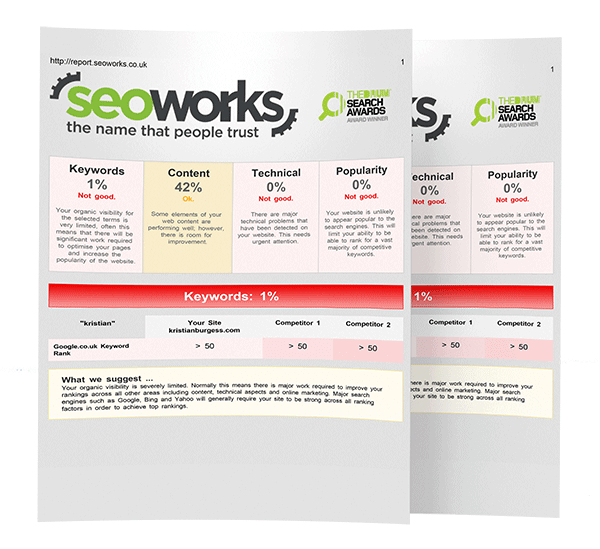Top Tips for Writing Great Search Ads
Imagine for a moment that you’re launching a new product. You’ve put in years of work and there’s a lot of excitement internally about the launch. You know people search Google for related products, so you create a search campaign targeting relevant terms.
So far, so good! You work through Google’s wizard-driven steps. You add your keywords, and finally, you get to the screen where Google asks you to write an ad. You stop dead in your tracks. A bead of sweat runs down your forehead.
What should you write about? Pricing? Features? Outcomes? Proof elements? The endless possibilities of the blank screen engulf you. You close the laptop and make a coffee instead.
Most Google Ads are written on impulse or as a painful afterthought. As a result, most ads look similar to all the other ads on the search results page. Most ads mention similar features and benefits.
Ad creation is where the rubber hits the road in your ad account. Writing ads that generate both high click-through rates and high conversion rates is the key driver of ad performance.
So, how can you write great ads, quickly and effectively, without pulling your hair out and drinking all the coffee in the office?
1. Research the product
Yeah I know, it’s your product and you already know everything about it. But what do people say about it? Are there any customer testimonials you can use? Most ads only talk about you as the advertiser, so simply branching into things your customers have said can set you apart.
Also, can you claim anything about your product that a competitor cannot? Think about:
- The features and benefits of the product itself
- Cost or time savings
- Greater convenience and service
- Aspects that relate more to you as a company, such as years in business, track record, number of customers
If you have a presence on Amazon, read your product reviews. If you have a Youtube channel, take a scroll through any video comments.
2. Research the market
For 3-5 of your primary search terms, take a look at both:
- The other paid ads (in particular the top listings)
- The top organic listings.
What kind of things do the other ads and listings say? Are they mostly feature-driven?
In writing your ad you need one or two ‘big ideas’ that are different to the other ads. Your ideal customer should glance at your ad and intuitively decide you’re the right option.
3. Collate ideas
Open a Word or notebook file and collate the ideas you have come up with so far. I prefer to use notepad to remove all formatting considerations; at this point I am only interested in the message itself. Also, don’t consider character limits at this point. You’re simply trying to assemble the right ideas, emotions, outcomes and wording.
On your notepad file, I suggest separating your ideas into ‘safe choices’ and ‘edgy choices’. ‘Safe choices’ are ideas a customer might expect you to say, but most commonly overlap with competitive ads. ‘Edgy choices’ are ideas that only you can say, or things that are phrased in an unusual or edgy way. For instance, try stating a warning or proclamation. Try stating a guarantee that nobody else can make.
Years ago a direct mail advertiser ran the headline “Corns gone in seven days or money back!” It ran for years without being beaten. Could you appropriate the same syntax?
4. Create more edgy ideas!
OK, so now we’re going to really set your ads apart. Take your edgy ideas and see how far you can push them. Write one or two lines your boss might not approve of. Push the envelope a little. What’s the worst thing that could happen to a customer if they make the wrong decision? Is anyone else involved in the buying process? (Spouse, F.D.?) Could you include the spouse or F.D. in the ad?
For years, IBM ran with the line “Nobody ever got fired for buying IBM”. This worked because it alluded to the approval of a higher decision-maker.
5. Create 1 safe ‘control’ ad (using the responsive search format)
From your notepad of ideas enter 12-15 headlines (of up to 30 characters) and 4 descriptions (of up to 90 characters). Stick to ‘safer’ ideas in this ad. Include proof elements, years in business and so on.
6. Create 1 or 2 more edgy ‘challenger’ ads
If your click volume is low volume (say under 500 clicks per month), create 2 responsive search ads (1 safe and 1 edgy). For higher volume ad groups you’ll want to create 3 responsive search ads in total (1 safe and 2 edgy).
Sometimes we’ll keep the headlines constant across two of the ads and only vary the descriptions, then create a third ad using completely different headlines and descriptions.

As you can enter up to 15 headlines per ad, usually some headlines will appear in all 3 ads. To maintain quality score you’ll nearly always want to use the keyword in one or two headlines.
7. Try using an AI copy tool to generate alternate ideas and wording
I know, you’ve been itching to fire up ChatGPT. Well now’s the time! But do this as an expansion step rather than as part of the initial ad creation. Ask the tool to create variations of your current ideas and see what it comes up with. Jasper.ai is another good and affordable option.
Currently, AI allows you to scale your creative efforts, but the output is only as good as what you put in. ‘Garbage in – garbage out’ definitely applies!
8. Finally, place more functional content about features, pricing etc in ad assets (formerly called ad extensions), rather than in the ad text itself
This saves space in your headlines and descriptions for more compelling, more emotionally powerful ideas.
Ad research and creation is an ongoing process and one you should repeat quarterly. Try to involve different team members at each iteration to gather the widest range of input.
9. Or, talk to the experts
This is the kind of work we do every day as an agency. The hardest ads to write are your own.
Get in touch to begin a conversation, or find out more about our PPC services.


Rob is an expert in Google Ads, copywriting, and marketing automation. He’s also an author of three books on marketing and a part-time podcaster.

